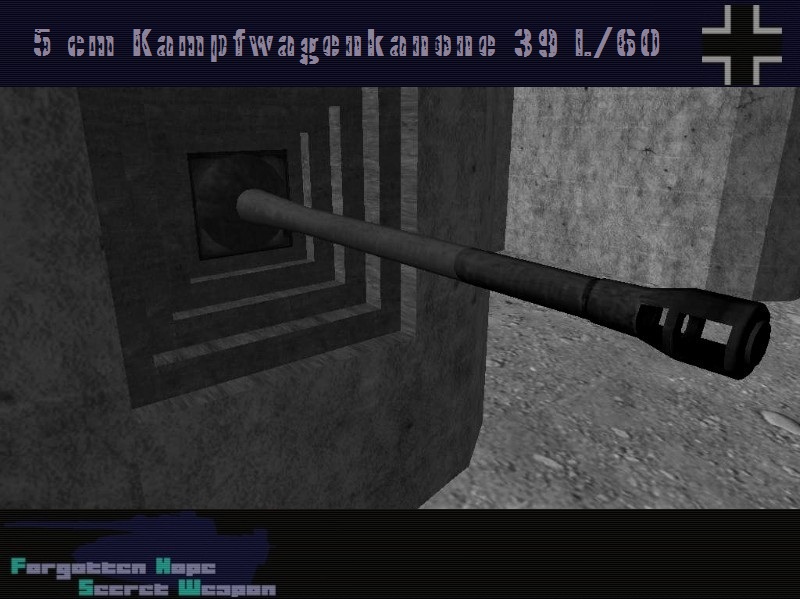


Canon Anti Char Pak 38 KWK39 Utah Beach Wn 5?
Les armes antichars dans les bunkers
English translation
 |
Mon étude se base sur des lectures faites dans des livres écrits par le spécialiste de la bunker archéologie française à savoir Alain Chazette. Je tiens particulièrement à lui tirer mon chapeau pour les différentes études dont il est l auteur qui font autorité dans le métier.
Mais revenons à notre sujet
Pour les allemands il fallait arrêter l’ennemi sur la plage et éviter que les têtes de pont puissent se fixer rapidement. Dans cette optique trois éléments sont déterminants.
1°) Le bunker classique qui doit ralentir le début du débarquement et qui est armé avec des armes semi automatiques ou des canons légers. Le tout est protégé par un réseau de mines et de barbelés.
2° )Ensuite pour arrêter net le déboulé des chars ennemis des plages vers l’intérieur il existe des petits bunkers spécialement dédiés à leur emploi antichar.
3° )Et enfin à quelques centaines de mettre de la plage des gros ouvrages plus spécialement dédiés à assommer les têtes de pont avec leur armement lourds
En arrière de la ligne de contact nous pouvons trouver rapidement des unités blindées qui rejetteront l’ennemi à la mer. T
out ce schéma doit fonctionner à merveille mais il existe une condition tres importante avoir la maîtrise de la troisième dimension à savoir la maîtrise du ciel or en 1944 les allemands avaient perdu cette bataille.
Mais revenons à notre canon anti char disposé dans les bunkers.
Les allemands ont utilisé en grand nombre un excellent canon antichar Pak construit et développé par la firme Rheinmetall en 2 versions.
Le 5 cm/ KwK39/L 42 canon du Panzer III J. M. G.
Le 5 cm/KwK39/L69 avec frein de bouche
Ces 2 types d’ armes ont aussi été installées sur deux types de fortifications du type Ringstände Regeblau H 600
L’ensemble de cette fortification comprend un encuvellement pour la pièce antichar avec des soutes pour les munitions pouvant contenir 500 obus.
Diverses casemates sont visibles sur la côte méditerranéenne certaines protégées par un toit
Parfois l’arme fut installée sur un socle en béton appelé Bhelfsockellafette (bhskla). Elle était protégée par des sacs de sable ou un muret en pierres sèches
Pour plus de renseignements je ne puis que vous conseiller de lire le petit résumé écrit par Alain Chazette Tobrouk topologie, la Bible pour ce genre de construction et de plus vous pouvez de glisser dans votre poche ce qui est très utile
Caractéristiques
Munition Pzgr 39/40
My study is based on reading made in books written by the specialist of french bunkerarchaeology Alain Chazette.
I want particularly to pay a tribute at him for his different studies of which he is the author which make authority in job.
But let us come back to our subject
For the German it was necessary to stop the enemy on the beach before the strengthening of the bridgehead In this perspective three elements are decisive.
1 °) The classical bunker which must decelerate the beginning of disembarkation and that is armed with weapon semi automatic or of light cannons. The whole is protected by minefieds and barbed wires.
2 °) Then to stop the issue of enemy tanks of beaches there are small bunkers especially devoted to their anti tank job.
3 °) And finally behind(500 meters ) big bunkers more especially devoted to stun bridgeheads with their heavy armament
Behind the line of contact we can find fast armoured units which will reject the enemy to the sea. All this schema must work wonderfully if the defenders have the control of the third dimension
And in june 1944 the German had lost this battle because the Luftwaffe was absent in the Normandy sky.
But let us come back to our cannon anti tank disposed in bunkers.
The German used in big number a very good antitank gun Pak constructed and developed by Rheinmetall in 2 versions.
the 5 cm / KwK39 / L 42 cannon of Panzer III J. Mr G.
the 5 cm / KwK39 / L69 with muzzle brake
These 2 weapon were also installed on two types of fortifications of type Ringstände Regeblau H 600
This fortification consists in a location for the anti tank gun (encuvellement in french) with ammunitions holds that can contain 500 bombs.
Various blockhaus are visible on the Mediterranean coast some protected by a roof Sometimes the weapon was installed on a plinth in concrete called Bhelfsockellafette (bhskla).
It was protected by bags of sand or a low wall in dry stones
For more information I can only recommend you to read the small summary written by Alain Chazette Tobrouk topology, the Bible for this type of building and furthermore you can to slip into your pocket what is very useful
Technical Data
Factory Rheinmetall
Type 5cmKwK / L42 No brake of mouth no buckler
Ammunitions Pzgr 39/40 Portray 5cm KwK / Lde69
Brake of Mouth
Buckler
Munition Pzgr 39/40
Autres photoscopes (other walk Around )
Canon Anti Char Pak 38 KWK39 Pegasus Bridge
Canon Anti Char Pak 38 KWK39
Canon Anti Char Pak 38 KWK39 Utah Beach Wn 5
Canon Anti Char Pak 38 KWK39 Viervilles